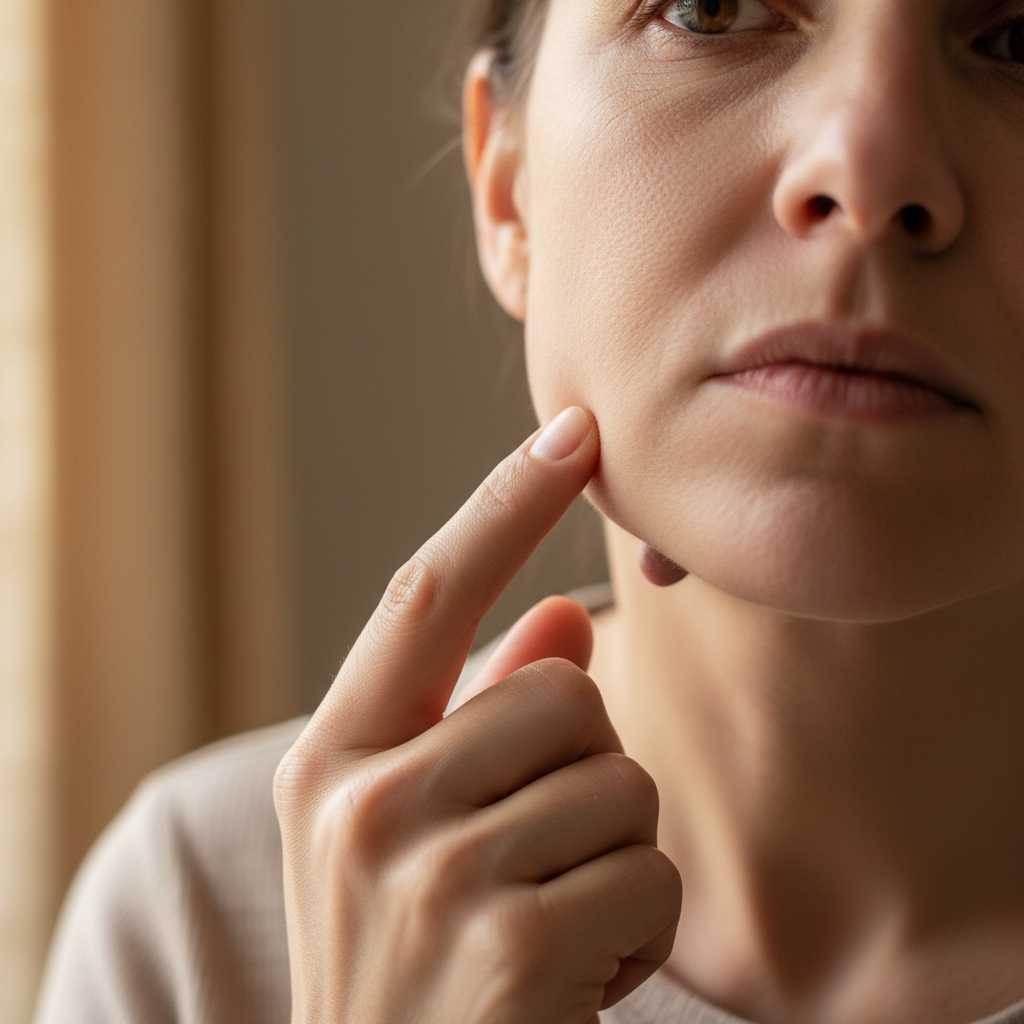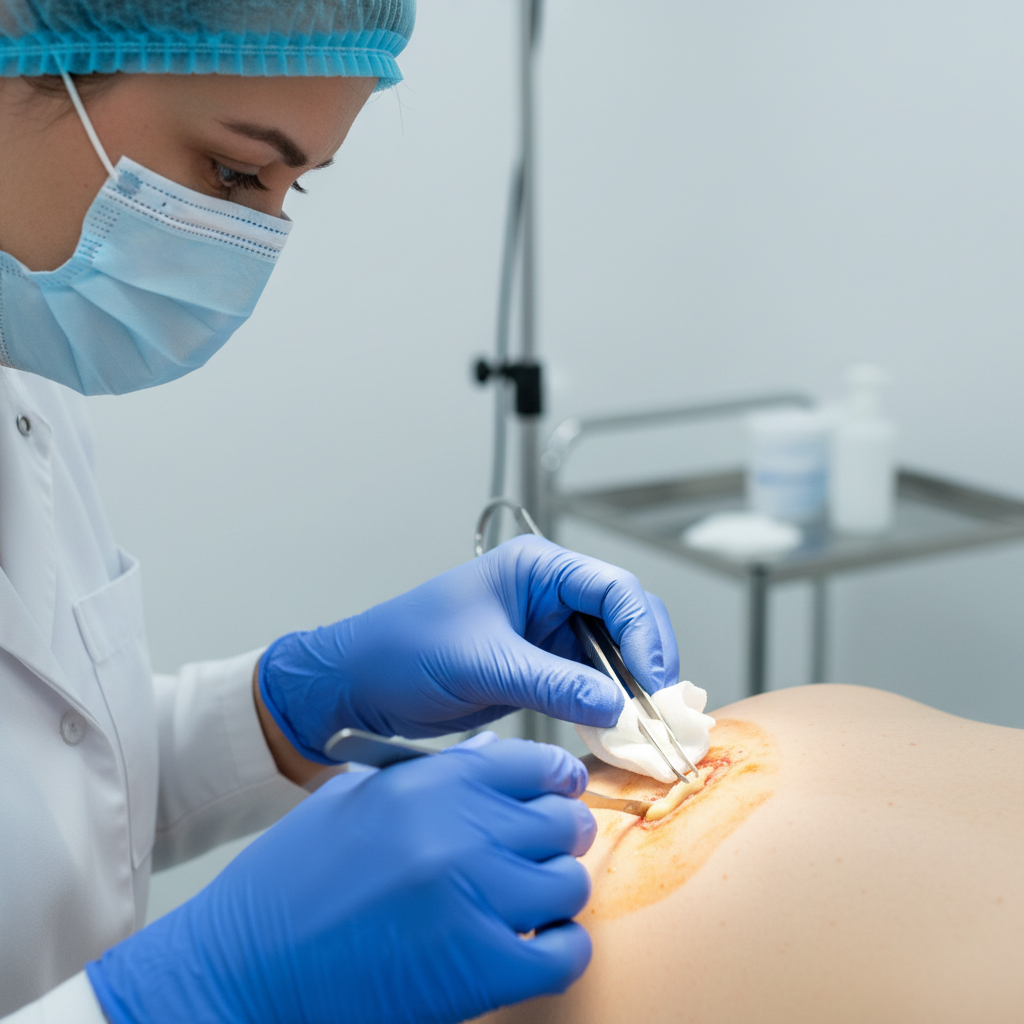
Table of Contents
Introduction
Sebaceous cysts are a common skin condition many people encounter at some point in their lives. These small, noncancerous bumps develop beneath the skin and can occasionally cause discomfort or concern due to their appearance or potential complications. Have you ever noticed a painless lump on your skin and wondered what it might be? Understanding how to treat sebaceous cysts properly is crucial to managing them effectively and avoiding unnecessary complications.
Proper treatment of sebaceous cysts not only helps alleviate any potential discomfort but also prevents infections and ensures the cyst does not worsen or leave behind scars. Sebaceous cysts typically form due to blocked sebaceous glands, skin injury, or genetic predisposition, and they can appear on various parts of the body such as the face, neck, back, and scalp. While these cysts are generally harmless and slow-growing, ignoring them can sometimes lead to bothersome symptoms like redness, swelling, tenderness, and even discharge if infection occurs. It is for these reasons that understanding the available treatment options is particularly important for anyone dealing with this condition.
According to dermatology studies, sebaceous cysts affect a significant portion of the population, often appearing in adults but also sometimes in younger individuals. These cysts can range from barely noticeable to visibly prominent, which can understandably cause self-consciousness or worry. For many, the question isn’t just about what sebaceous cysts are, but also about how to care for them properly at home and when to seek professional medical advice. Through this guide, we’ll address these concerns head-on, providing you with clear and practical advice.
Many people also wonder about home remedies and medical procedures that can effectively manage sebaceous cysts. For instance, simple home care methods like warm compresses and maintaining cleanliness are often the first steps in managing these cysts. However, more persistent or infected cysts might require medical intervention such as drainage or surgical removal. Recognizing the signs that indicate an infection or more serious issue is essential to ensuring timely treatment and avoiding further complications. This guide will equip you with the knowledge to distinguish these signs and understand the best treatment pathways available.
What You’ll Learn in This Guide
In this comprehensive guide, we’ll explore every aspect of sebaceous cyst treatment, from identification to prevention. Here’s what you can expect to learn:
- Understanding the Basics: We’ll explain what sebaceous cysts are, how they form, and their common causes, giving you a clear foundation to understand the condition.
- Recognizing Symptoms: Learn about the typical signs of sebaceous cysts including when to suspect infection or complications, so you can respond appropriately.
- Treatment Options: Explore a range of treatment methods from effective home care remedies to medical procedures like drainage and surgical removal.
- Prevention and When to Seek Help: Discover practical tips to prevent new cysts from forming and clear guidance on when it’s time to consult a healthcare professional.
By the end of this guide, you’ll feel confident in managing sebaceous cysts, understanding their nature, and knowing when to treat them at home or seek medical intervention. Taking charge of your skin health is empowering and will help you maintain comfort and confidence.
We’ll start by diving deeper into what sebaceous cysts are and their causes. Understanding the root of the condition will prepare you to spot these cysts early and act wisely. Then, we’ll move on to the signs and symptoms to help you identify a sebaceous cyst and recognize any changes that might suggest infection.
Treatment is a crucial section of this guide, as knowing the available options can prevent unnecessary pain and potential scarring. Whether you prefer to start with gentle home remedies or need to consider more advanced medical solutions, you’ll find guidance tailored to your needs. We will also discuss when treatment should not be delayed, especially if infection or rapid changes occur, as timely action is key to good outcomes.
Finally, we will cover strategies to reduce your risk of developing sebaceous cysts again, including daily skin care best practices and avoidance of skin trauma. Understanding these preventative measures can save you from future discomfort and visits to the doctor. The transition from knowledge to action is simple with clear directions and helpful insights that cater to everyday life.
By following this guide, you’re taking the first step towards effective management and care of sebaceous cysts. Let’s begin with gaining a clear understanding of these common skin bumps and how you can approach treatment confidently and safely.

Building on the introduction to sebaceous cysts, it is important to thoroughly understand the treatment options to effectively manage this common skin condition. Sebaceous cysts, though typically benign and painless, can sometimes lead to discomfort or infection if not addressed properly. By exploring both home care remedies and medical treatments, individuals can make informed decisions that prevent complications and promote skin health. This discussion will delve into practical approaches to care for sebaceous cysts, emphasizing when professional intervention is necessary to ensure safety and successful outcomes.
Home Care and Initial Treatment Options
Managing sebaceous cysts often begins with simple home care techniques that aim to reduce inflammation, prevent infection, and alleviate discomfort. These measures are especially suitable for cysts that are small, not painful, and show no signs of infection. Home remedies can be effective in controlling symptoms and supporting the body’s natural healing processes. However, it is crucial to approach treatment carefully to avoid aggravating the cyst, as improper handling can lead to infection or scarring. Understanding these options enables many to manage cysts without immediate medical procedures.
A key aspect of home care is maintaining cleanliness around the cyst to minimize bacterial buildup. Applying a warm compress helps to soften the cyst and can promote natural drainage or shrinkage by improving blood circulation to the area. Equally important is resisting the urge to squeeze or pop the cyst, as this can introduce bacteria into the tissue, causing infection and potentially leaving unsightly scars. For those cautious about treatment, these basic steps offer a safe and prudent starting point. To fully grasp this concept, it helps to understand the basics of skin protection and hygiene which contribute to cyst prevention and care.
Key Aspects of Home Care
Here are essential points to consider when managing sebaceous cysts at home:
- Warm Compress Application: Applying warmth several times a day can reduce swelling and soften the cyst contents, making it easier for the body to absorb the material naturally.
- Maintaining Cleanliness: Keeping the cyst and surrounding skin clean with gentle soap and water reduces the risk of bacterial contamination and infection.
- Avoiding Manipulation: Never attempt to squeeze or puncture the cyst yourself as this can worsen inflammation and spread infection.
- Monitoring Changes: Regularly observe the cyst for any signs of growth, redness, or pain which may indicate infection and the need for medical attention.
Professional Medical Treatments and When to Seek Help
While home care can be effective for mild cases, medical treatments are often necessary when cysts become recurrent, large, painful, or infected. Professional healthcare providers can offer safe and effective interventions designed to eliminate the cyst and prevent recurrence. Prompt medical assessment is crucial if there are signs of infection or other complications, as untreated infected cysts can lead to abscess formation or systemic issues. Understanding the full range of medical options empowers patients to seek appropriate care and avoid delays that might worsen their condition.
Drainage or aspiration is a common outpatient procedure whereby a healthcare professional carefully removes the cyst’s contents to relieve pressure and reduce swelling. In cases where cysts recur or do not fully resolve, surgical removal is often recommended to take out the entire cyst sac, which significantly lowers the chance of the cyst coming back. Additionally, if a cyst is infected, antibiotics may be prescribed to control bacterial growth and facilitate healing. Recognizing when not to delay treatment can prevent complications and ensure faster recovery. For a detailed breakdown of this step, see our guide on understanding treatment processes to appreciate the importance of timely intervention.
Important Considerations for Medical Treatment
Key factors to keep in mind when considering professional treatment include:
- Signs of Infection: Increasing redness, swelling, tenderness, or discharge from the cyst indicates the need for medical evaluation and possible antibiotic therapy.
- Surgical Removal: Recommended for cysts that are large, recurrent, or cosmetically concerning, surgical excision provides a permanent solution by removing the cyst sac entirely.
- Proper Drainage Techniques: Medical drainage is performed under sterile conditions to minimize infection risk and provide relief safely, which should not be attempted at home.
- Monitoring and Follow-up: After treatment, ongoing observation ensures that healing progresses well and that no new cysts develop, forming part of comprehensive care.

Conclusion
Sebaceous cysts are common, generally benign skin lumps that many people encounter at some point. Understanding their causes, typical symptoms, and treatment options is vital to managing this condition effectively and preventing complications. These cysts form beneath the skin due to blocked sebaceous glands, skin trauma, or genetic factors, commonly appearing on the face, neck, back, and scalp. While often painless and slow-growing, sebaceous cysts can become problematic if infected or if they grow rapidly, causing discomfort and potential skin damage.
Effective care for sebaceous cysts starts with observation and gentle home remedies such as warm compresses and maintaining good hygiene. These simple steps can reduce swelling, help the cyst drain naturally, and lower the risk of infection. However, it is crucial to avoid squeezing or popping the cyst yourself, as doing so can worsen inflammation, lead to infections, or cause scarring. Medical treatments range from drainage and aspiration to complete surgical removal of the cyst, which ensures the cyst lining is fully excised to prevent recurrence. Antibiotics may be necessary if infection sets in.
Knowing when to seek medical evaluation is just as important as initial care. Warning signs such as persistent pain, swelling, redness, discharge, fever, or rapid cyst growth should prompt timely consultation with a healthcare provider. Early intervention often results in faster healing and fewer complications. Additionally, newer approaches like laser or radio-frequency treatments provide alternatives to traditional surgery, though they may not be as widely available or permanent.
To prevent sebaceous cysts from forming in the future, maintaining healthy skin habits is key. This includes regular cleansing, avoiding skin injuries or irritation, and managing oily skin conditions properly. Taking these preventive measures supports skin health and reduces the likelihood of cyst recurrence.
In summary, the path to effectively treat sebaceous cysts lies in awareness, appropriate home care, and knowing when to seek professional help. By carefully monitoring symptoms and choosing the right treatment approach based on the cyst’s size, location, and condition, you can manage sebaceous cysts confidently and safely. Remember, these cysts are generally harmless but should not be neglected when symptoms worsen. Following your healthcare provider’s advice for care and recovery helps minimize scarring and promotes healthier skin over time.
Taking control of your skin health empowers you to reduce discomfort and avoid unnecessary medical complications related to sebaceous cysts. Whether you start with gentle home remedies or proceed to medical intervention, informed choices and timely action will support the best outcomes. Embrace your journey towards healthier skin with confidence, knowing you have various options and strategies to treat sebaceous cysts effectively and prevent future issues.
